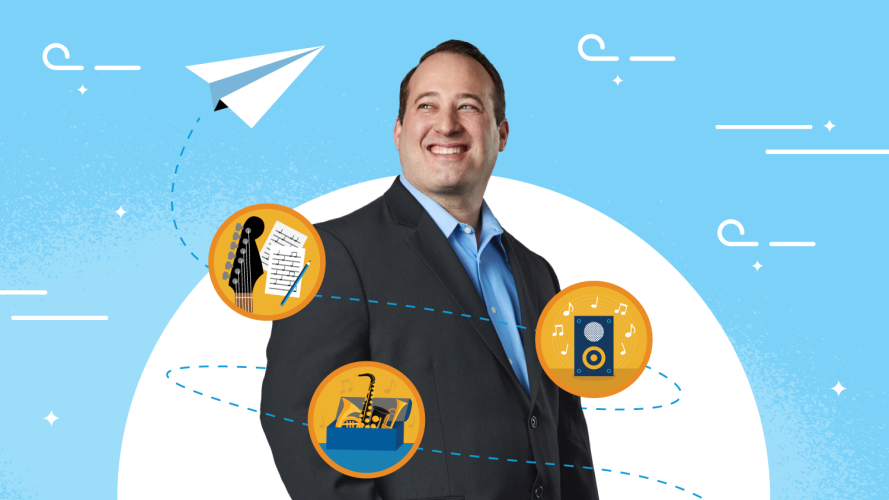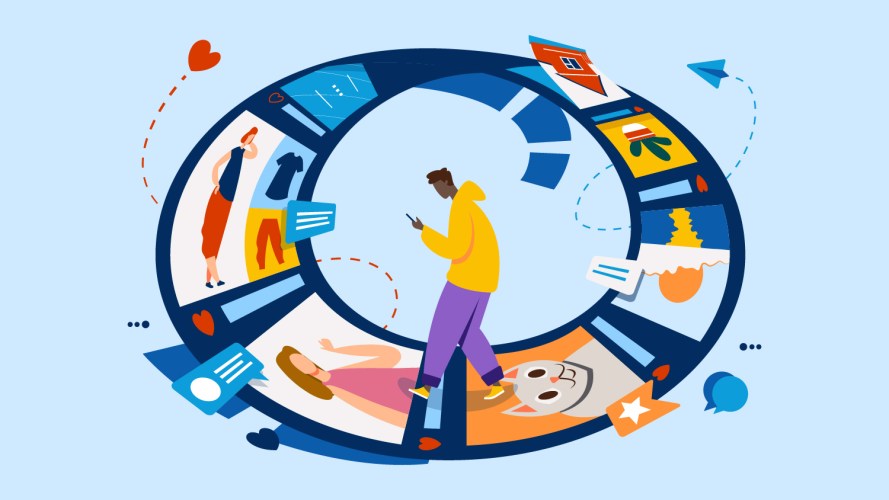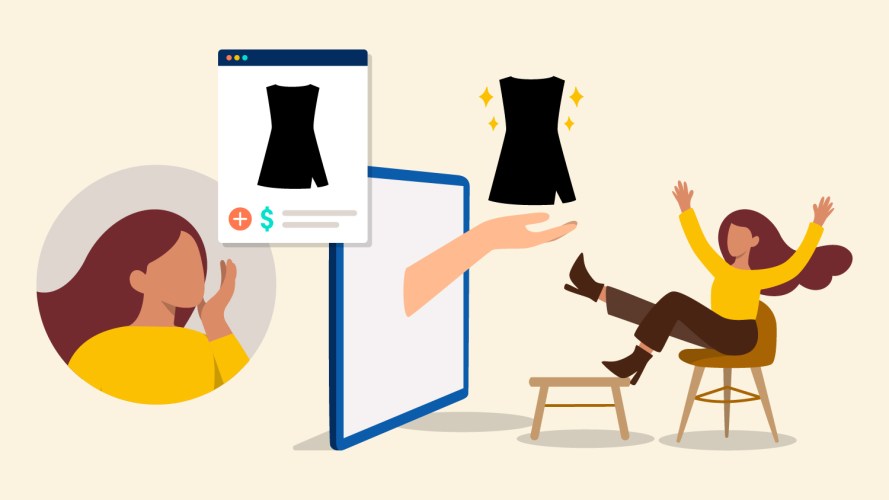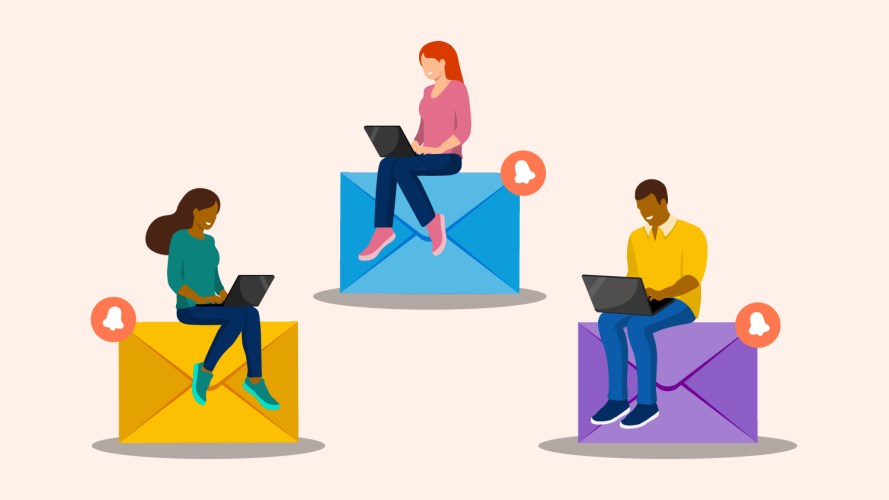4 Tips to Turn Your Website Visitors into Customers



Getting traffic to your site is crucial. But delivering what visitors need and getting them to come back is even more important. Here’s how to do that.

Meredith Turner
Put bluntly, your website matters. Not considering it a critical part of your marketing could cost you revenue and end a customer relationship before it even begins. On the flip side, a strong plan could give you a big edge over the competition. So, how can you turn your website visitors into loyal customers? It starts with the right website conversion strategy.
When a potential customer visits your website, they’re often looking for specific information that addresses their needs. They have one thing in mind: “How does this product benefit me?”
These folks expect a tailored solution and a personalized experience to arrive there. However, it’s not enough for brands to just meet these demands. We found that 62% of customers say they want companies to anticipate their needs. The right website conversion strategy works one step ahead.
Raise your website conversion rates
Looking for major gains in ROI, as well as website and email conversion? See what Forrester’s Total Economic Impact of Salesforce’s Marketing Cloud study found worked best.



What is website conversion?
Website conversion is the process of turning website visitors into customers. The goal of website conversion is to create a seamless and enjoyable customer experience that encourages visitors to take a specific action — that could be purchasing a product, filling out a form, subscribing to a newsletter, or downloading a resource.
Typically, customers complete these desired actions through a combination of strong content, clear calls to action, and good web design.
The percentage of visitors who complete these actions is the conversion rate. Your website conversion rate is an easy way to see the return on investment for your marketing efforts. By including website conversion as part of your marketing strategy, you can increase the number of leads or customers you generate from your existing website traffic, which boosts your revenue and growth.
Encouraging visitors to take the next step requires a personalized experience that not only meets the customer’s needs, but anticipates them.
How do you increase website conversion with a personalized experience?
There is good news for marketers looking to create a personalized experience on their website: using artificial intelligence (AI) and data can make it easy, even automated. Automation is a more efficient path to website conversion and can show visitors content based on their interests, making the experience custom and relevant each time they return to the website.
Let’s break down four ways you can use AI and data to better personalize your website and turn visitors into customers.
1. Gather website visitor data to tailor your calls to action
Gathering information allows you to understand your customer. AI-powered algorithms analyze data in real time — such as browsing history, demographics, and behavior patterns — to build a 360-degree profile view of the visitor. You can use this information to dynamically adjust website content, product recommendations, and specific calls to action based on the visitor’s interests and preferences.
2. Use that data to improve your emails
By collecting website behavior data, you can create more targeted and relevant email campaigns — making your audience more likely to engage and convert.
These emails can be highly effective as they are timed to coincide with the visitor’s specific behavior and interests. If a visitor viewed a specific product on your website, send them an email with personalized product recommendations or special offers for that product. Based on your website behavior data, you can also try:
- Segmented email lists based on page visits, products viewed, and actions taken.
- Triggered emails such as abandoned cart emails or follow-up emails after a specific action is taken.
- Personalized subject lines that prompt the customer to act on the products they browsed.
3. Celebrate special moments like birthdays or anniversaries — customers love the surprise
All that data can help you improve your website conversion rate by helping you better understand your customer and what makes them happy. For example, you can use customer data to celebrate special occasions in their lives, such as birthdays, anniversaries, or milestones.
Offer personalized promotions or discounts to customers on special days to show appreciation for their loyalty. Follow up with customers after a purchase to make sure they’re satisfied and offer personalized recommendations for related products or services.
4. Work with your service team to gain a full view of the customer journey
Marketing and service need to work in lock step to help website conversion rates grow. Start by integrating customer data from various sources into a single profile to provide customer service agents with a comprehensive view of each customer. Providing agents with real-time access to this data during interactions allows them to:
- Quickly identify and address customer needs.
- Use predictive analytics to anticipate customer needs and recommend personalized solutions.
- Provide personalized support, with a clear view of what your customer has done across your channels up until that point.
How are brands increasing conversions with website personalization?
Turtle Bay, a full-service resort on Oahu’s North Shore, has been a gathering place for families and friends for more than 50 years. The resort identified target personas to better understand their customers and increase website conversion.
Turtle Bay tracked behaviors through visits to their website and email signups, and developed individual customer profiles detailing interests and preferences. With this data, they created personalized homepage journeys specific to the customer’s needs and retargeted them with tailored emails and digital ads.
Let’s say someone browses pony rides and slides at the pools on Turtle Bay’s site. The behavior buckets them under the resort’s “Family” persona. If the person leaves the website without booking a stay, a “site abandonment” email is triggered. The next day, they receive an email with information on family activities in the resort, including details on the most family-friendly room(a bungalow).
They also receive an ad on social media with a special offer for pony rides. If they click the call to action and return to the website, they’re greeted with the message, “Welcome back! Reserve your ocean bungalow. Book now!” Before checking out, they can enter the promotional offer for the pony rides add-on — an easy upsell.
“Our visitors get the content they want to see, and that’s what’s driving our conversion,” said Turtle Bay Chief Commercial Officer Robert Marusi. “That’s what’s cutting through all the clutter, getting right to what they want, and enabling them to convert. In today’s marketing world, personalization is where it all needs to be.”
Your website is often the first point of contact between your business and potential customers. It gives them a glimpse into your brand’s personality and values and sets the foundation for a personalized customer experience. It generates website conversion and builds loyalty.
Customer expectations are high, and so are the stakes. The good news is data and AI-powered personalization can help you convert those visitors.
What do customers expect from your website?
Personalizing your website based on customer behavior can help you earn more from your marketing spend. See how building 1:1 customer personalization is the key to conversion.






























